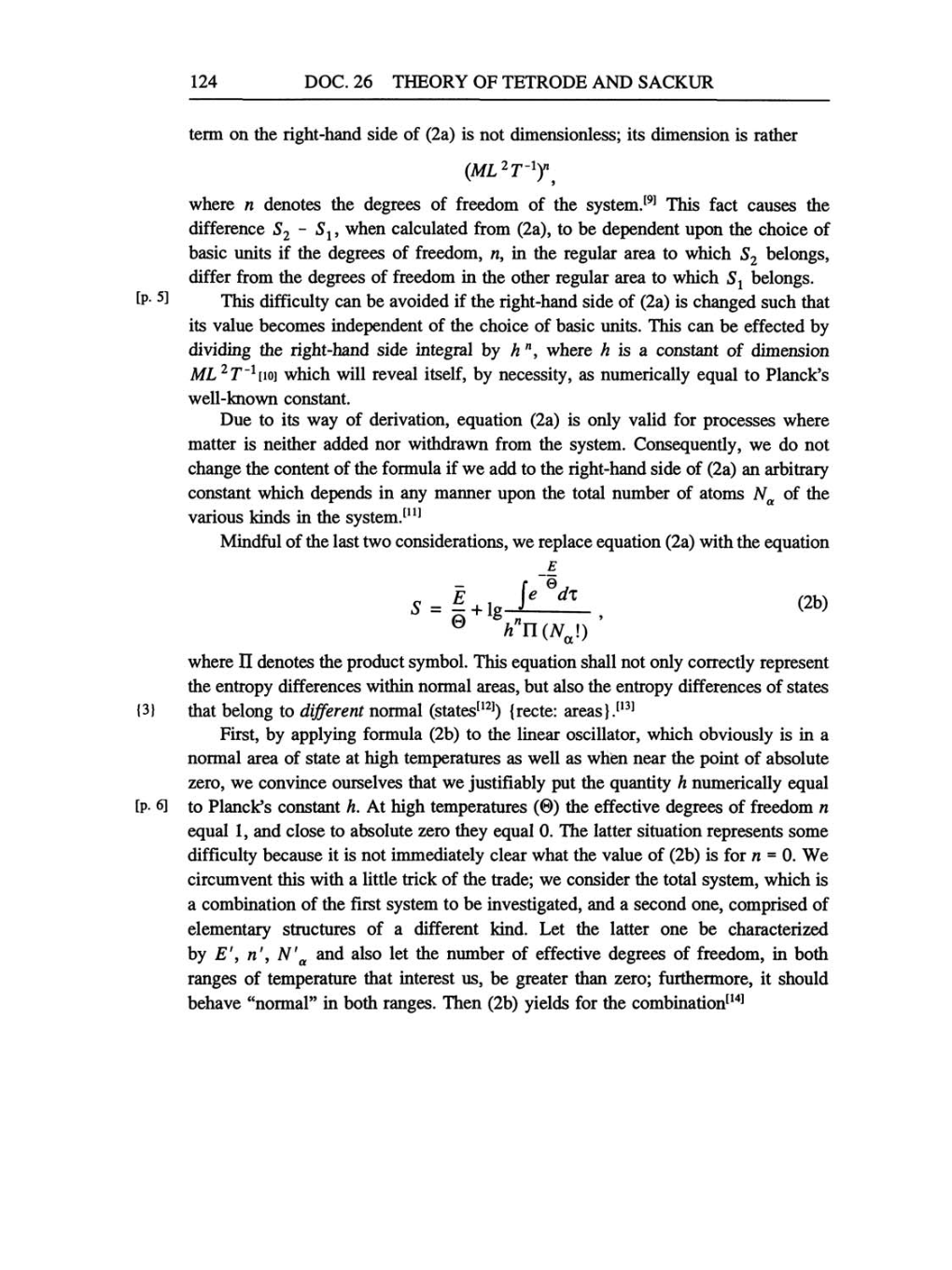124
DOC. 26 THEORY OF TETRODE AND SACKUR
term
on
the
right-hand
side of
(2a)
is
not
dimensionless;
its
dimension is rather
(ML2T-1)n,
where
n
denotes the
degrees
of
freedom
of
the
system.[9]
This
fact
causes
the
difference
S2
-
S1,
when calculated from
(2a),
to be
dependent upon
the choice
of
basic units
if
the
degrees
of
freedom,
n,
in the
regular area
to which
S2
belongs,
differ from the
degrees
of
freedom in
the other
regular area
to which
S1
belongs.
[p.
5]
This
difficulty can
be avoided if the
right-hand
side
of
(2a)
is
changed
such that
its value becomes
independent
of
the choice
of
basic units. This
can
be effected
by
dividing
the
right-hand
side
integral by
hn,
where h is
a
constant
of
dimension
ML2T-1[10]
which will reveal
itself,
by necessity, as numerically equal
to Planck's
well-known constant.
Due
to
its
way
of
derivation, equation
(2a)
is
only
valid for
processes
where
matter is neither added
nor
withdrawn from the
system.
Consequently,
we
do not
change
the content
of
the
formula
if
we
add to the
right-hand
side of
(2a)
an arbitrary
constant which
depends
in
any manner upon
the total number of atoms
Na
of the
various
kinds
in the
system.[11]
Mindful
of
the
last
two
considerations,
we
replace equation (2a)
with the
equation
_E
s
=
I+igifÜ^L,
(2b)
0
A"n
wa!)
where
II
denotes the
product symbol.
This
equation
shall not
only correctly represent
the
entropy
differences within normal
areas,
but also the
entropy
differences
of
states
{3}
that
belong
to
different
normal
(states[12])
{recte:
areas}.[13]
First,
by applying
formula
(2b)
to the linear
oscillator,
which
obviously
is in
a
normal
area
of
state at
high temperatures
as
well
as
when
near
the
point
of
absolute
zero,
we
convince ourselves that
we justifiably put
the
quantity
h
numerically equal
[p.
6]
to Planck's constant
h.
At
high temperatures (@)
the effective
degrees
of
freedom
n
equal
1,
and close
to
absolute
zero
they equal
0.
The latter situation
represents
some
difficulty
because it is not
immediately
clear what the value
of
(2b)
is for
n
=
0.
We
circumvent this with
a
little trick of the
trade;
we
consider the total
system,
which is
a
combination
of
the first
system
to be
investigated,
and
a
second
one, comprised
of
elementary
structures
of
a
different kind. Let the latter
one
be characterized
by
E', n',
N'a
and also let the number
of
effective
degrees
of
freedom,
in both
ranges
of
temperature
that interest
us,
be
greater
than
zero;
furthermore,
it should
behave "normal" in both
ranges.
Then
(2b)
yields
for the
combination[14]
